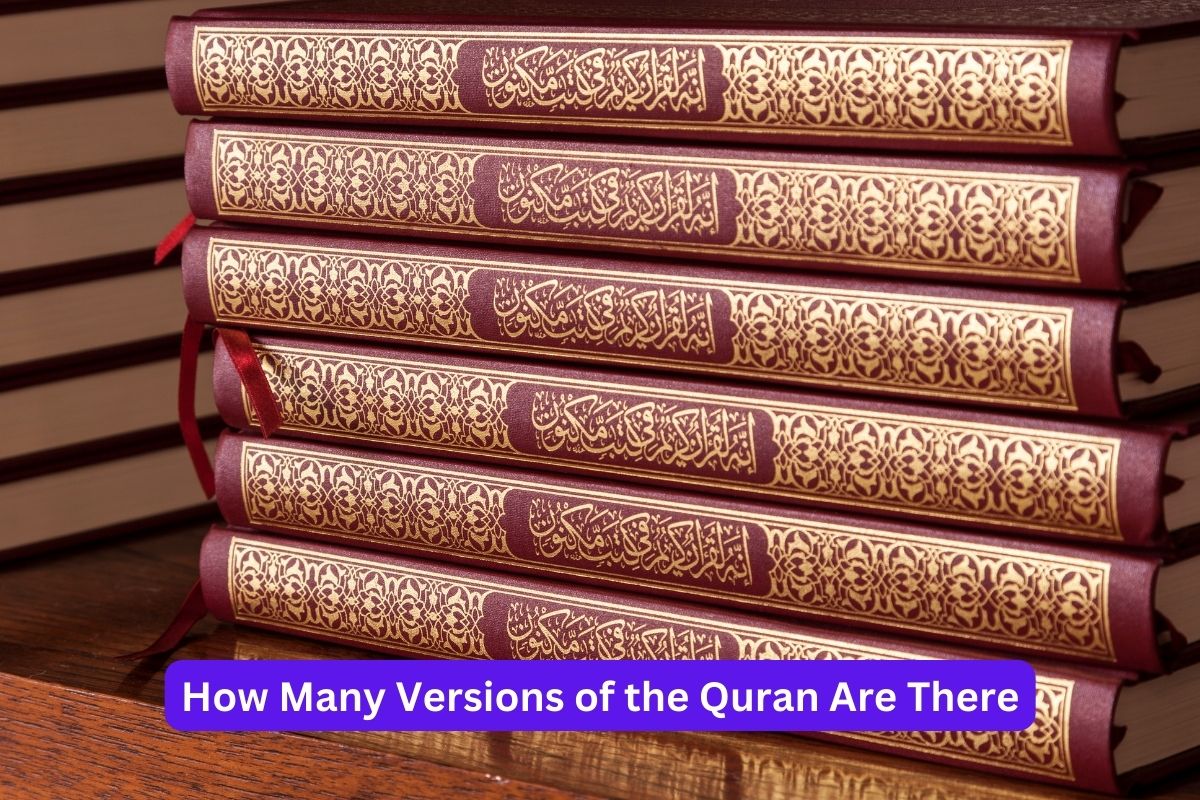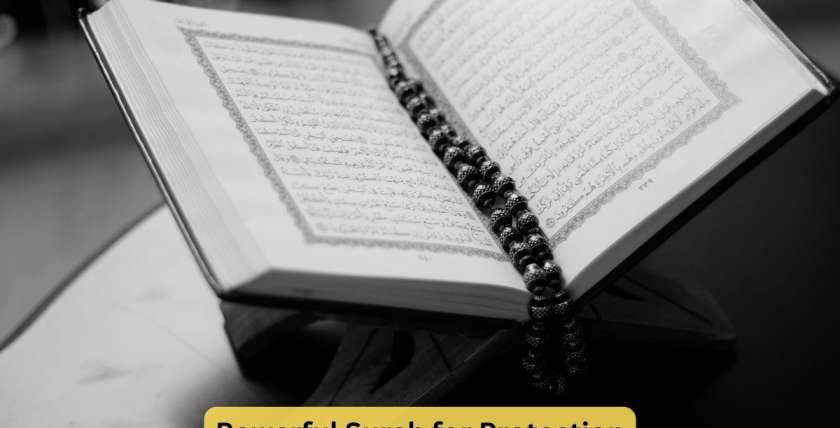The Quran, revered as the holy scripture of Islam, is considered by Muslims around the world to be the direct word of God as revealed to Prophet Muhammad. But have you ever wondered how many versions of the Quran are there?
Its profound spiritual significance and guidance have been a cornerstone of the Islamic faith for over fourteen centuries. Yet, beyond its profound teachings, the question of how many versions of the quran are there remains a topic of intrigue and scholarly debate.
In the pursuit of understanding the Quran’s textual history, scholars have delved into the intricacies of its transmission, preservation, and variations that have emerged over time.
The diverse interpretations and regional pronunciations of the Quranic text have given rise to discussions about the nature and scope of these differences.
While the Quran’s core message remains unchanged, the existence of textual variants offers a fascinating glimpse into the historical, linguistic, and cultural dimensions of its dissemination.
This article embarks on a journey to unravel the complexities surrounding the various versions of the Quran. We will explore how many Quran books are there, the different Arabic versions of the Quran, how many translations of the Quran are there, and the Hafs and warsh Quran differences.
Through this exploration, we hope to gain a deeper appreciation for the multifaceted nature of the Quranic tradition and the unwavering devotion of scholars who have dedicated their lives to preserving and understanding this timeless scripture.
The importance of the Quran
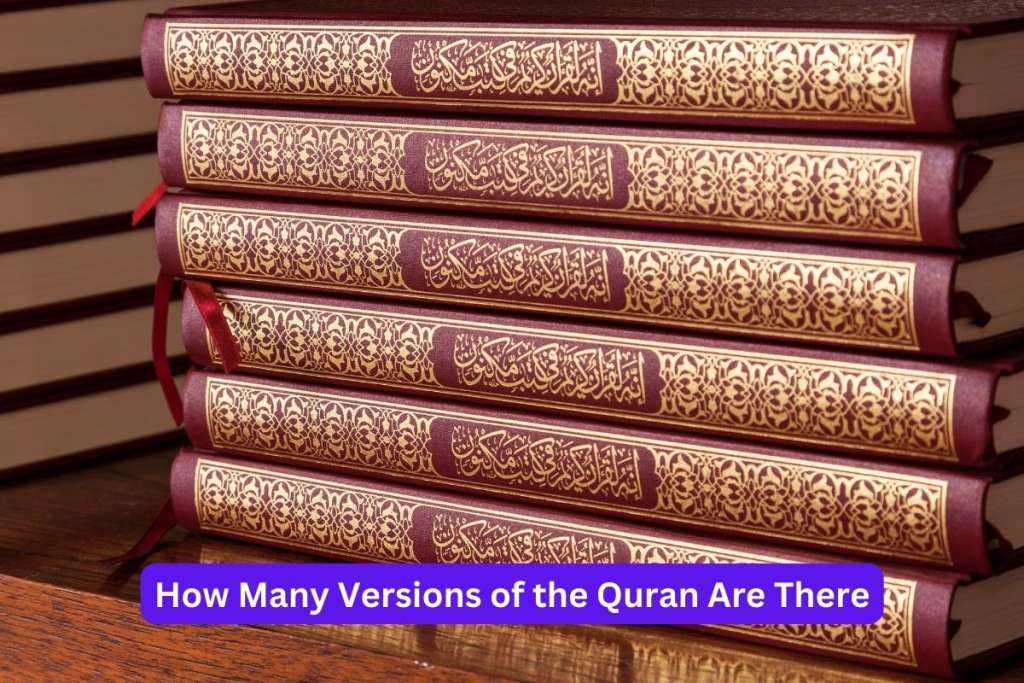
The Quran holds immense importance for Muslims and is regarded as a foundational and sacred text within the Islamic faith. Its significance extends beyond religious beliefs, impacting various aspects of personal, social, and spiritual life. Here are some key reasons highlighting the importance of the Quran:
1. Divine Revelation: Muslims believe that the Quran is the literal word of God (Allah), revealed in Arabic to the Prophet Muhammad over a period of approximately 23 years. As such, it is considered the ultimate source of guidance, wisdom, and moral principles for all aspects of life.
2. Spiritual Guidance: The Quran provides a comprehensive guide for Muslims on how to live a righteous and fulfilling life. It addresses matters of faith, ethics, morality, and spirituality, helping believers navigate challenges and make decisions in accordance with their beliefs.
3. Legal and Ethical Framework: The Quran lays the foundation for Islamic jurisprudence (Sharia), offering principles and guidelines for legal matters, social justice, and ethical conduct. It outlines rights and responsibilities for individuals, families, and communities.
4. Social Cohesion: The Quran emphasizes the importance of unity, compassion, and empathy among individuals and communities. It encourages believers to show kindness, fairness, and generosity to others, fostering a sense of unity and social cohesion.
5. Personal Development: The Quran encourages self-reflection and self-improvement, urging believers to develop qualities such as humility, patience, gratitude, and forgiveness. It offers a roadmap for personal growth and character development.
6. Cultural Identity: The Quran is a cornerstone of Islamic culture and identity. It shapes the values, customs, and traditions of Muslims around the world, fostering a sense of belonging and shared heritage.
7. Intellectual and Scholarly Pursuits: The Quran has been a source of inspiration for scholars, thinkers, and philosophers throughout history. Its profound language, intricate narratives, and ethical teachings have sparked intellectual exploration and discussions.
8. Recitation and Devotion: The act of reciting the Quran is a form of worship for Muslims. Regular recitation is believed to bring spiritual blessings and strengthen the bond between the believer and God.
9. Healing and Comfort: Many Muslims turn to the Quran for solace during times of difficulty, grief, or distress. Its verses offer words of encouragement, hope, and consolation.
10. Eternal Message: Muslims believe that the Quran is a timeless message meant for all generations. Its teachings remain relevant and applicable, offering guidance and solutions to contemporary challenges.
In summary, the Quran’s importance lies in its role as a divine guide for Muslims, shaping their beliefs, values, actions, and relationships. Its teachings provide a framework for living a life of purpose, virtue, and devotion to God and fellow human beings.
Gain a much deeper understanding of the Quran with our Quran Online Courses for Muslims of all levels and around the world today. Reserve your spot here today!
How many versions of the Quran are there?
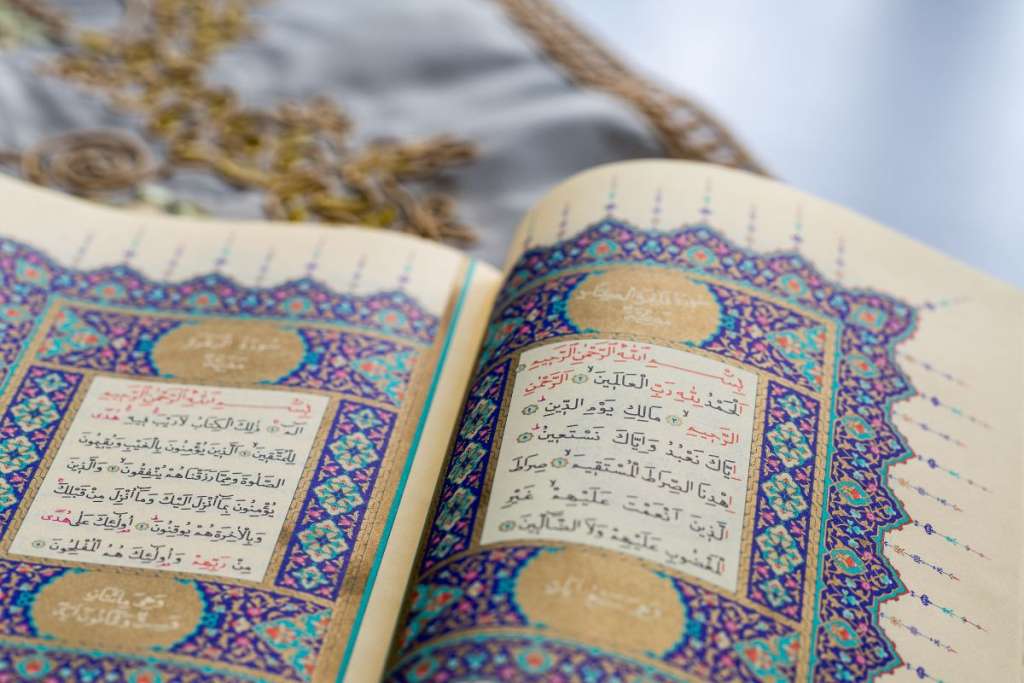
The only book that exists is the Quran. It has a total of 114 chapters, called suras. Due to the fact that they are not all the same length, the surahs are presented in decreasing order of length. Al-Fatiha and Al-Naas are the shortest and longest surahs, respectively.
The Quran also consists of 30 juz’, or portions. This division was established to make it easier to recite the Quran over the course of a month.
Considering how frequently the Quran has been printed and duplicated throughout history, it is extremely challenging to estimate the precise number of copies that are in existence. One of the most widely read and published books in the world, the Quran is available in many versions, languages, and formats.
The Quran is widely accessible due to its availability in digital formats, audio recordings, and internet resources in addition to printed versions.
In mosques, Islamic centers, libraries, homes, and other places of worship around the world, the Quran is usually available in many copies.
There are so many copies and editions that it is practically impossible to count them all.
The basic principles and message of the Quran always remain the same because it is believed to be the original word of God as given to Prophet Muhammad in Arabic, despite the script, language, calligraphy, and design of the physical copies of the Quran varying.
Important literature mentioned in the Quran
The Qur’an does, however, specify names and a number of sacred literature. Here are a few examples:
Tawrat (Torah): The Torah, revealed to Prophet Moses (Musa in Arabic), is mentioned as a divine scripture in the Quran. It is considered the holy book given to the Children of Israel (Bani Israel). The term “Tawrat” refers to the first five books of the Old Testament in the Bible.
Zabur (Psalms): The Zabur, attributed to Prophet David (Dawud in Arabic), is also mentioned in the Quran. The Zabur is believed to contain praises, supplications, and songs of worship.
Injil (Gospel): The Injil, revealed to Prophet Jesus (Isa in Arabic), is mentioned in the Quran. It is considered the message of guidance and teachings revealed to Jesus. The term “Injil” is commonly associated with the New Testament of the Christian Bible.
Suhuf (Scrolls): The term “Suhuf” refers to scrolls or writings that were given to various prophets. While the specific content and recipients of these scrolls are not detailed in the Quran, they are generally believed to be early revelations to earlier prophets.
It’s important to note that while the Quran acknowledges the existence of these earlier scriptures, it also emphasizes that the final and complete revelation is the Quran itself. Muslims believe that the previous scriptures may have undergone changes or distortions over time, which is one of the reasons why the Quran was sent as a final and preserved revelation.
These are the principal holy books that are specifically addressed in the Quran, however it does not list all of them. The Quran primarily focuses on delivering its own message and providing direction for humanity.
Gain a much deeper understanding of the Quran with our Quran Online Courses for Muslims of all levels and around the world today. Reserve your spot here today!
Different Arabic Versions of the Quran:
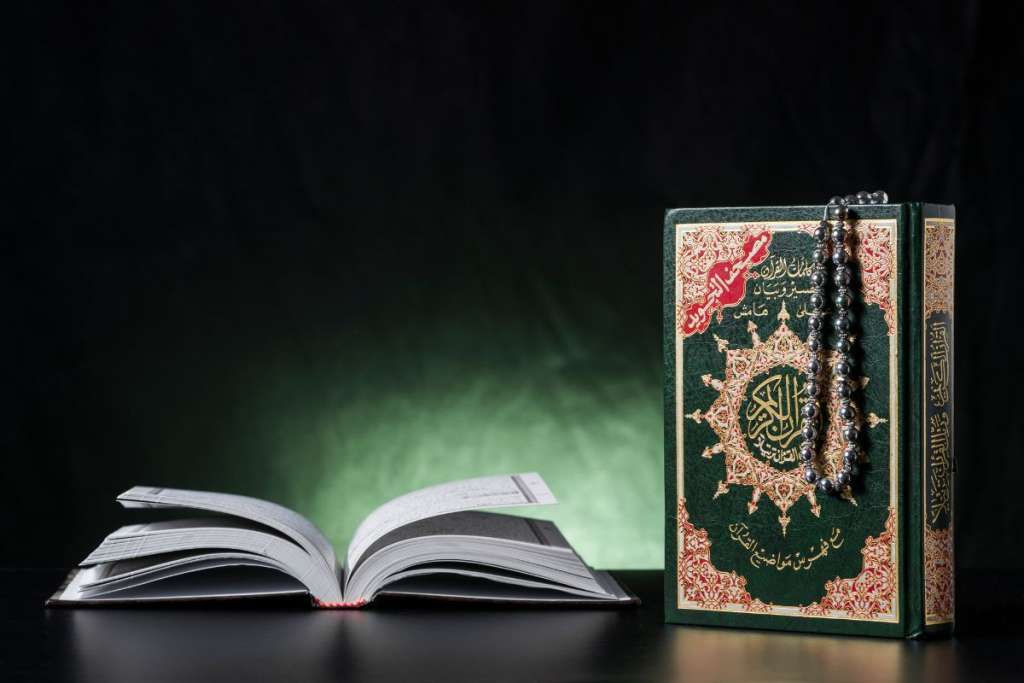
Muslims hold the Quran in the highest regard as a holy text, believing its verses to be the exact words of God in Arabic. The script, handwriting, and linguistic styles utilized in various printed or handwritten copies of the Quran can vary, but the text’s central message and precepts never change. These variations are frequently linked to the Arabic script’s regional and cultural diversity.
It’s crucial to stress that these variances have no bearing on the Quran’s actual content or meaning. The differences are mainly cosmetic and have no bearing on the scripture’s religious or spiritual value.
Muslims across the world recognize and accept these differences as part of the diverse cultural expressions within the Islamic tradition.
Examples of different Arabic versions or scripts of the Quran:
Here are a few illustrations of several Quranic scripts or variants in Arabic:
The Quran was first composed in the Uthmani script during the reign of the third Caliph, Uthman ibn Affan. It is regarded as one of the earliest and most reliable cursive scripts and has distinctive calligraphic characteristics.
Naskh script: Naskh is a script that is frequently used to copy the Quran. It is suitable for printed editions because of its readability and clarity. Many contemporary printed editions of the Quran make use of it.
Older script known as Kufic is distinguished by its angular and geometric features. In manuscripts and mosque décor, it is frequently utilized as ornamentation.
The Maghrebi script, which is mostly employed in North Africa, is distinguished by a distinctive calligraphic style that is influenced by the history and culture of the area.
This writing system, known as the Indo-Pak Script (Nastaliq), is widely used throughout South Asia, particularly in India and Pakistan. It is distinguished for its elegance and includes a special fusion of Naskh and Ta’liq styles.
The flowing and ornamental design of the Andalusian script, which was inspired by the calligraphic traditions of the Andalusian area of Spain, gives it its name.
Ottoman script: During the Ottoman Empire, this script was frequently employed to copy manuscripts and is recognized for its distinctive calligraphic elements.
It’s important to emphasize that regardless of the script or calligraphy used, all versions of the Quran are considered sacred and are treated with utmost respect by Muslims. The choice of script is often a matter of tradition, culture, and personal preference.
Gain a much deeper understanding of the Quran with our Quran Online Courses for Muslims of all levels and around the world today. Reserve your spot here today!
Hafs and Warsh Quran differences:
The terms “Hafs” and “Warsh” refer to two different methods of reciting the Quran. These methods are variations in the way certain words and verses are pronounced.
They are part of the broader field of Quranic recitation, known as “Qira’at.”
Both Hafs and Warsh are valid recitation methods, and they are widely recognized and respected within the Islamic tradition. Here are some key differences between the Hafs and Warsh recitations:
Origin and Transmission:
Hafs: The Hafs recitation is named after the transmitter Hafs ibn Sulaiman al-Asadi, who was a prominent scholar of Quranic recitation. This method of recitation is the most widely used and accepted throughout the Muslim world, especially in North Africa, the Middle East, and most parts of Asia.
Warsh: The Warsh recitation is named after the transmitter Nafi’ ibn ‘Abd al-Rahman al-Madani al-Qurashi al-Kufi. This recitation method is primarily used in parts of North and West Africa, including Morocco, Algeria, Mali, and Mauritania.
Pronunciation Differences:
While the overall meaning of the Quran remains consistent in both recitation methods, there are variations in the pronunciation of certain words, phrases, and verses. These differences may involve vowel sounds, consonant pronunciation, or the length of vowels.
Word Order:
In some cases, the order of words in a verse may vary slightly between the Hafs and Warsh recitations. However, these differences are relatively minor and do not significantly alter the overall meaning of the text.
Geographical Distribution:
Hafs is more widely practiced and taught in Islamic centers and educational institutions around the world. It is the standard recitation method for most Muslims.
Warsh is primarily prevalent in North and West Africa, where it has been traditionally transmitted and preserved.
Scholarly Study:
Both recitation methods have been subject to scholarly study and analysis. Scholars have compiled books and treatises on the differences between the two methods, aiming to document and explain the variations.
Acceptance and Respect:
Both Hafs and Warsh recitations are considered valid and authentic ways of reciting the Quran. Muslims who follow either method do so out of respect for the diverse historical transmission of the Quranic text.
It’s important to note that regardless of the recitation method, the essential message and teachings of the Quran remain unchanged.
The differences between Hafs and Warsh are mainly matters of pronunciation and recitation style, and both methods have been preserved and passed down through generations of scholars and reciters.
Gain a much deeper understanding of the Quran with our Quran Online Courses for Muslims of all levels and around the world today. Reserve your spot here today!
How many translations of the Quran are there:
The Holy Quran, revered by more than 1 billion Muslims worldwide, is now available in 47 different languages and has portions of it translated into 114 more languages.
These translations vary in terms of linguistic style, depth of interpretation, and intended audience. Some translations are more literal, aiming to provide a word-for-word rendering of the Arabic text. While others focus on conveying the broader meanings and messages of the Quran.
It’s important to note that while translations are valuable tools for understanding the Quran’s message, they are interpretations of the original text and may carry some degree of subjectivity based on the translator’s understanding and perspective.
In conclusion, the question of how many versions of the Quran exist reveals the rich tapestry of its historical transmission, linguistic diversity, and global impact.
While the title might suggest multiple distinct versions, it’s important to understand that at its core, the Quran remains a singular, unchanging revelation in Arabic, believed by Muslims to be the literal word of God as revealed to Prophet Muhammad.
The true Meaning of Versions
The concept of “versions” when discussing the Quran encompasses several dimensions:
- The physical copies and manuscripts
- The varying Arabic calligraphy and scripts used across different cultures
- The recitation styles exemplified by Hafs and Warsh
- And the multitude of translations that strive to convey its meanings to diverse linguistic audiences.
The multiplicity of Quranic expressions highlights the Quran’s universal appeal and adaptability. As it seeks to connect with people from all walks of life and linguistic backgrounds.
The variations in scripts and recitations, such as Hafs and Warsh, reflect the deep reverence and meticulous preservation efforts undertaken by scholars over centuries.
These variations, while encompassing nuances of pronunciation and rhythm, do not alter the fundamental message and spiritual essence of the Quran.
Translations of the Quran further extend its reach, enabling millions to engage with its wisdom, guidance, and moral teachings. Each translation offers a unique perspective, influenced by the translator’s insights and cultural context.
Conclusion
However, it is vital to remember that translations, while invaluable, are interpretations and convey only a glimpse of the profound depth and eloquence found in the original Arabic text.
As we explore the multifaceted dimensions of the Quranic tradition – from its original Arabic text to its myriad translations, from its distinct recitation methods to its global influence – we are reminded of its timeless significance.
The Quran, in its unity and diversity, continues to inspire and guide countless individuals, serving as a source of spiritual solace, moral compass, and intellectual pursuit across the globe.
It is this unity within diversity that truly captures the essence of the Quran, transcending linguistic and cultural boundaries while remaining a testament to the profound wisdom and divine guidance it offers to humanity.
If you found this article helpful, please share it. If you have any questions or comments, please drop us a comment below and we’ll be more than ready to help you.


